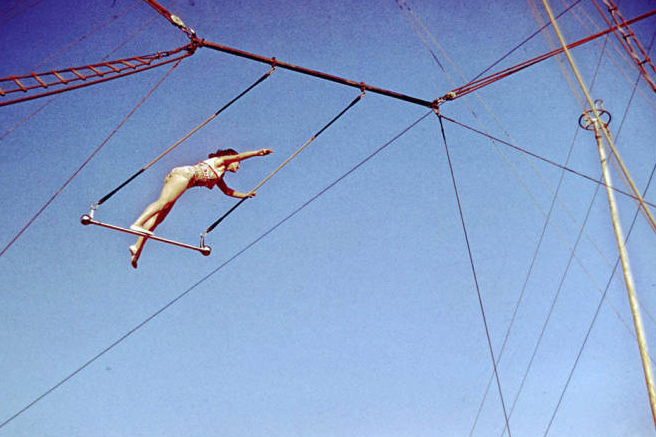There aren’t a lot of places on the Illinois State campus where, at 9 a.m. on a weekday, a visitor has to be buzzed in through a locked door to reach a room called “The Vault.”
This is where Maureen Brunsdale and Mark Schmitt ’96 call home. They run Milner Library’s Special Collections and Rare Books department, comprised of four unique collections, including the Historical Textbook Collection and Children’s Literature Collection and the Lincoln Collection of Harold K. Sage.
But their busiest collection – the one that brings in researchers from around the world and has landed on ABC News, the Huffington Post, and the New Yorker – is the Circus and Allied Arts Collection.
“It’s a collection with a lot of depth,” said Schmitt.
Brunsdale is head of Special Collections and Rare Books. During a recent tour for a first-time visitor, her passion for the circus collection was clear as she moved between the narrow stacks of The Vault, rattling off individual stories about an impressively large chunk of more than 100,000 items in her care.
She pulled out a letter written in 1907 by Otto Ringling to his brothers – yes, those Ringling Brothers – suggesting they all consider buying their competitors, Barnum & Bailey. The brothers ended up doing just that later in 1907, though they didn’t operate them jointly until 1919. No one else has Otto’s letter – not the Ringling-themed Circus World museum in Baraboo, Wis., and not the Ringling Museum of Art in Sarasota, Fla.
“The beginning of Ringling Bros. and Barnum & Bailey is right here!” Brunsdale said.
Milner Library and the Wisconsin and Florida museums are the three largest circus history research facilities in the U.S. Milner’s circus collection stood at 2,100 items in 1963 but now has more than 100,000 items – from 490-year-old books to canceled checks from 20th century circus companies. The single largest collection of items came via donation from Sverre Braathen, a collector from Madison, Wis., who befriended many in the circus community and did legal work for them.
Milner got the bulk of his collection after his death in 1974. Brunsdale only took over as Special Collections chief four years ago, and it had been 20 years since someone at Milner had the job full-time. Schmitt, a former student worker at Milner, joined her in Special Collections in 2010, and they’ve been organizing the massive amount of materials ever since.
“Once word got out that these things (from Braathen’s collection) were here and they were accessible, then it really started blossoming,” said Brunsdale.
You might be wondering: Why the circus?
That’s because from the 1870s up until the 1950s or so, Bloomington was a key city in the American circus scene. Two Bloomington boys helped put McLean County on the map by becoming the Flying LaVans, luring other aerial artists to town to train. By the start of the 20th century, a brother-and-sister trapeze act known as the Flying Wards turned Bloomington into an aerial-artist factory, training performers at their practice barn on Emerson Street and sending them around the world.
That operation was eventually moved to Florida in the 1950s, but Milner’s director at the time, Eleanor Welch, wanted to document Bloomington’s role in American circus. The collection was born.
“It all comes back to Bloomington,” Brunsdale said.
Ryan Denham can be reached at rmdenha@ilstu.edu.
PHOTOS: A Passion for Circus digital collection


